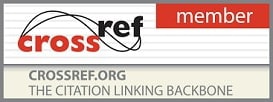Vol. 9, Special Issue 1, Part H (2025)
Olfactory response of melon fruit fly Zeugodacus cucurbitae (Coquillett) to protein bait volatiles
K Nithya, Zadda Kavitha, M Shanthi, PD Kamala Jayanthi, C Vijayaraghavan and K Swarnalatha
Melon flies are reported to damage 81 host plants and is considered as a major insect pest of cucurbitaceous vegetables like ridge gourd, bitter gourd, pumpkin, bottle gourd etc.. Depending on the host and season, economic losses caused by theses insects varies between 30 and 100%. They are also major impediments for export of fresh vegetables. The most popular management method i.e., parapheromone traps can attract only male fruit flies.
Trapping female fruit flies along with males is very important in reducing it,s damage in field conditions. Hence, the present research was carried out towards the identification of fruit fly attractive compounds from the proteinex bait volatiles. GC-EAD studies were done on the olfactory response of male and female fruit flies to the proteinex bait volatiles. The volatile compounds viz., naphthalene, camphor, pentanoic acid, hexanoic acid and 1, 2 xylene elicited active response in the antenna of female fruit flies. Among these compounds, naphthalene, hexanoic acid and 1,2 xylene elicited active antennal response in male cucurbit fruit flies also. In olfactometer studies, naphthalene attracted more number of female fruit flies followed by 1, 2 xylene and hexanoic acid. With regard to males, camphor was the more alluring followed by 1, 2 xylene and naphthalene. In gated cup trap experiments, attraction to female fruit flies was more in naphthalene followed by camphor, hexanoic acid and 1, 2 xylene. Naphthalene was also attractive to male fruit flies followed by 1, 2 xylene and camphor.
Pages: 614-619 | 957 Views 294 Downloads








